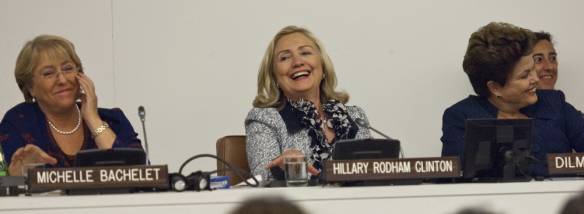In the wake of World War II three major political trends have formed international development; the human rights revolution, the diffusion of democracy, and the growing acceptance of gender equality. All three trends have contributed to significant increases in women’s participation, representation and influence. Yet great contrasts persist in women’s ability to exercise the rights which the international community of states has bestowed upon them.

Women in Politics: Michelle Bachelet, H.E. Hillary Rodham Clinton, H.E. Dilma Rousseff, Photo Credit: UN Women/Catianne Tijerina
- Three global trends have formed international development since World War II: the human rights revolution, the diffusion of democracy, and the growing acceptance of gender equality.
- These trends have proven to be of great benefit to women’s political advancement in many regions of the world.
- Political systems which allow for civil society organizations’ participation, particularly women’s organizations, provide women with more influence.
- Despite the fact that the idea of gender equality has won greater acceptance, there continue to be many obstacles to women’s participation and representation.
Read more in the PRIO Policy Brief Global Aspects of Women’s Political Participation.